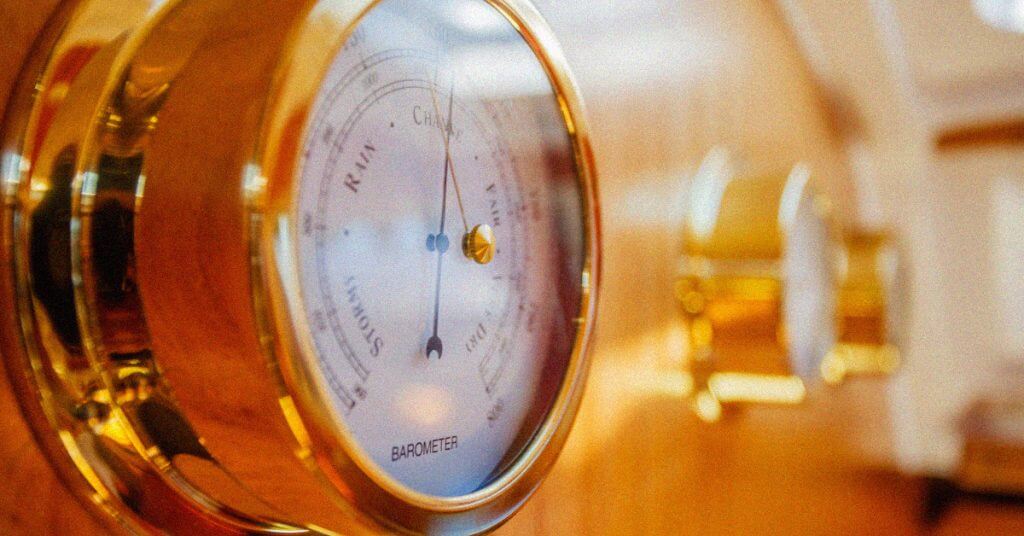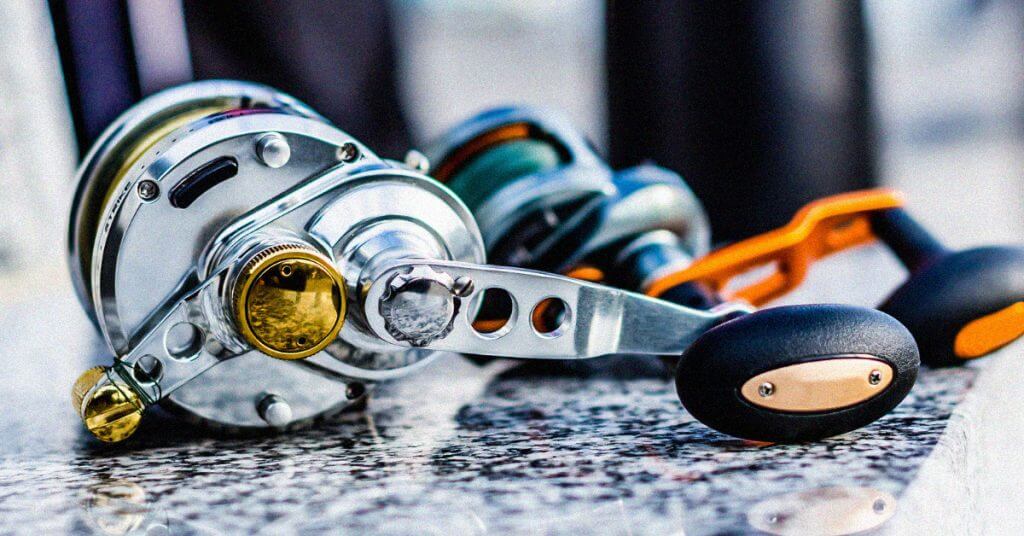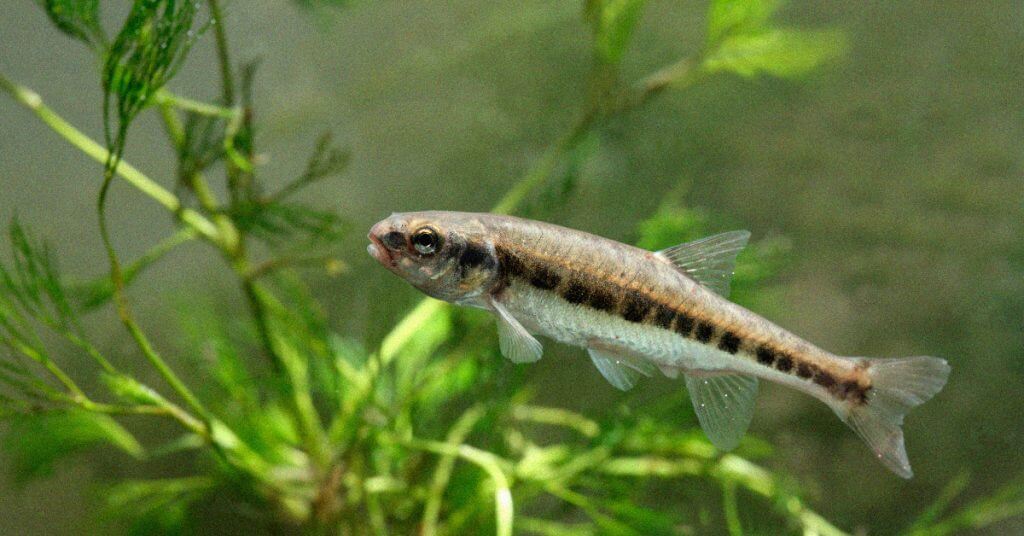Bass fishing requires different equipment depending on the situation. Anglers use different types and weights of the line for specific techniques, types of water, and types of lures.
If you get it right, you’ll have an easier time catching more bass and likely enjoy the process much more while you’re at it.
Do you want to catch more largemouth bass? Bigger bass? One of the most significant factors is the type of line you’re using.
So what pound test for bass is best?
The answer isn’t one-size-fits-all, but there are general guidelines based on the technique and lure you’re planning to use.
If you make adjustments based on these factors, you’ll have the right recipe to give you the best bass fishing experience and the least amount of issues.
YourBassGuy.com Community Coordinator Wesley Littlefield explains why he thinks 12-lb test line is best for bass fishing in this YouTube video.
What Pound Test for Bass? How to Choose
The choices can be overwhelming when choosing a line for bass fishing. With three different lines and various strengths, the jumble of options can get as tangled as your line if you choose wrong.
Your best bet is to start with some simple guidelines.
When fishing for bass, use an 8-12 pound test line (monofilament or fluorocarbon) with finesse bait and a spinning reel.
Increase to a 15-20 pound test if you deal with heavy cover.
Switch to the 30-50 pound test range with a braided main line when using big swimbaits or crankbaits. This is also versatile for using jigs and topwater lures.
Remember, the size test line for bass fishing – and the type of line – you choose is one of the most critical components of a successful bass fishing experience.
If you select a line that’s not quite right, you’ll likely end up with tangles or a broken line. Or you might not catch any fish at all.
While these guidelines are a great place to start, you can check out the cheat sheet below for a more detailed approach based on the bait and technique you’d like to use.
What Pound Test by Lure
Not sure what lb line for bass you should use?
Generally, what pound test for bass to optimally use is based on the lures you choose. It would be best if you also considered the environment and your technique.
If you’re going into dirty water or heavy cover, stick to the stronger end of the range. When fishing clear water and less cover, lighter lines work best.
If you’re particularly inexperienced and just starting your bass fishing journey, it might be best to start at the low end of the range and use a spinning reel to get your sea legs before figuring out what you prefer.
Here’s a quick cheat sheet based on your lures and/or technique:
Drop Shotting and Wacky Rigs
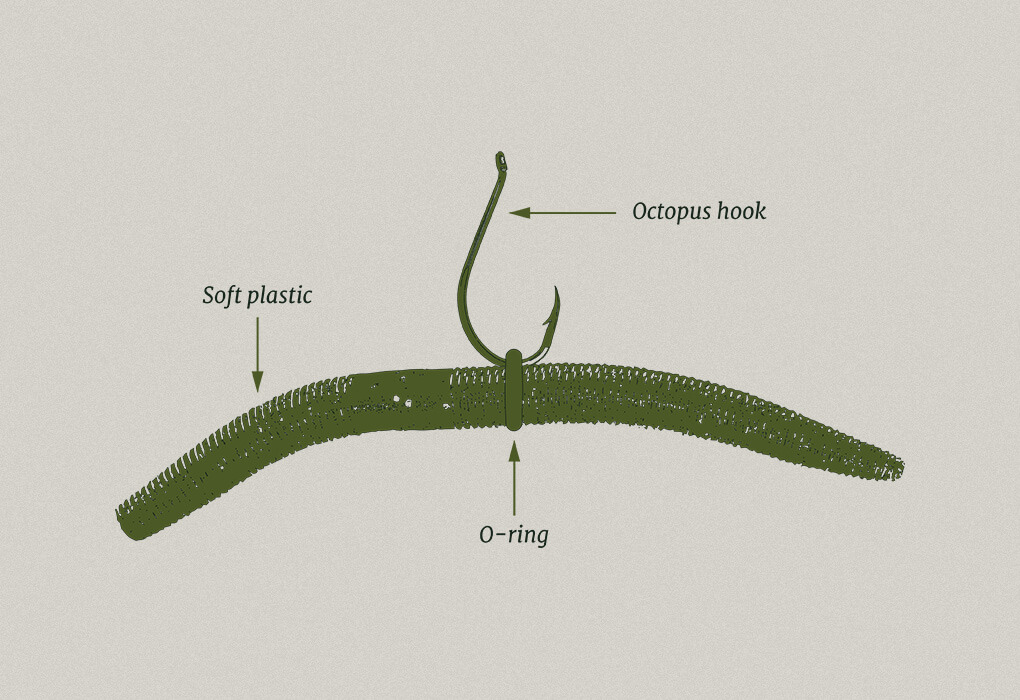
- Monofilament (leader only): 6-10 pound test
- Fluorocarbon (leader or mainline): 6-12 pound test
- Braid (mainline): 10-20 pound test
Finesse (soft plastic)
- Monofilament (leader only): 6-10 pound test
- Fluorocarbon (leader or mainline): 8-10 pound test
- Braid (mainline): 10-20 pound test
Jigging, Texas rig, and Carolina rig
- Monofilament (leader only): 15-20 pound test
- Fluorocarbon (leader or mainline): 15-25 pound test
- Braid (mainline): 40-50 pound test
Spinnerbaits & Chatterbaits
- Monofilament (leader only): 12-20 pound test
- Fluorocarbon (leader or mainline): 12-20 pound test
- Braid (mainline): 40-50 pound test
Crankbaits & Jerkbaits
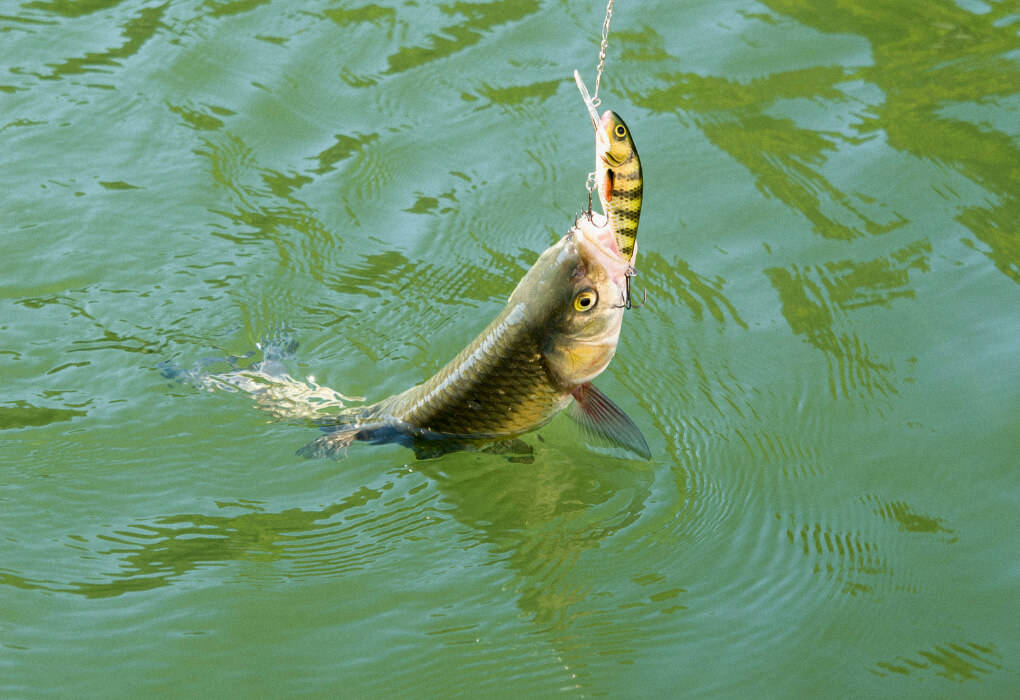
- Monofilament (leader only): 12-20 pound test
- Fluorocarbon (leader or mainline): 12-25 pound test
- Braid (mainline): 30-40 pound test
Swimbaits
- Monofilament (leader only): 20-25 pound test
- Fluorocarbon (leader or mainline): 20-25 pound test
- Braid (mainline): 50+ pound test
Topwater
- Monofilament (leader only): 12-20 pound test
- Fluorocarbon (leader or mainline): N/A (not recommended for topwater lures)
- Braid (mainline): 30-40 pound test
Buzzbaits & Frogs
- Monofilament (leader only): N/A (not recommended; use only braid without leader)
- Fluorocarbon (leader or mainline): N/A (not recommended with topwater)
- Braid (mainline): 30-50 pound test (no leader recommended; use only braid)
Spinning Reels vs. Casting Reels
Besides determining what pound line for bass you want to use, you should also consider the type of reel you prefer for bass fishing.
Spinning reels have a reputation for being more manageable than baitcasting reels. This is primarily due to backlash, which can happen no matter your level of experience.
This happens because the spool spins with the weight of the lure; you have less control over stopping it if it snags or you’re casting into the wind, for example.
While spinning reels don’t have issues with backlash, they can have line-twisting problems.
There are no one-size-fits-all recommendations, but rather it’s a personal preference for which type of reel to use. It also depends on your specific fishing situation.
Generally speaking, spinning reels are more optimal for using finesse lures and other lightweight situations.
Whereas conventional and baitcasting reels may work better when using larger baits and when you need a heavier line.
They’re also preferable when working with a greater casting distance.
Spinning Reels
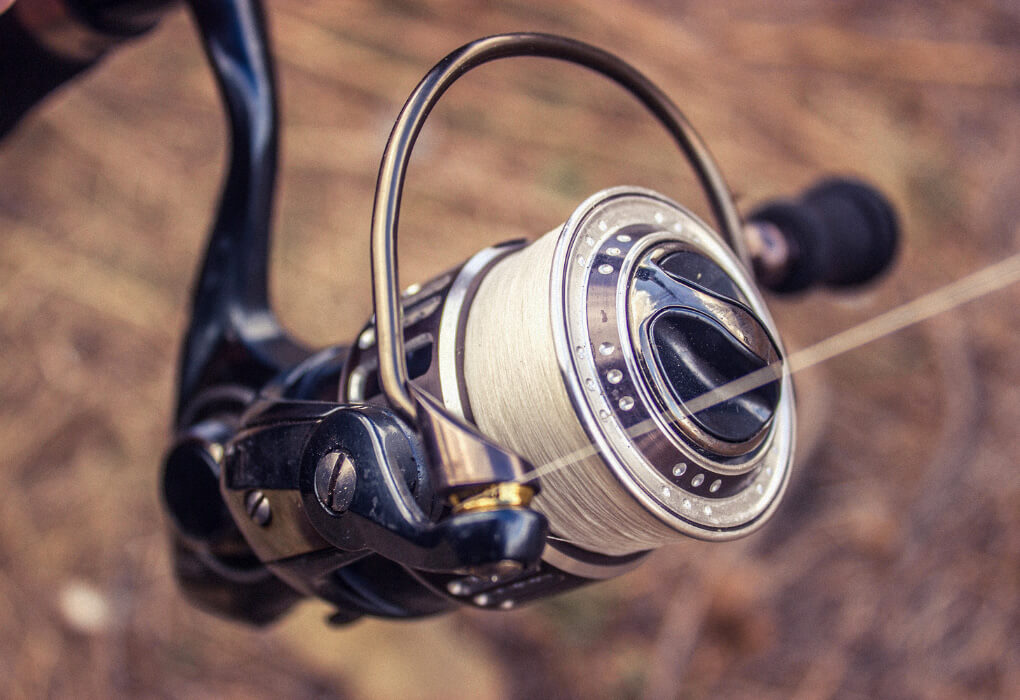
Spinning reels are structured with the reel sitting below the handle of the fishing rod. It’s affixed to the rod via an extended handle, hanging a few inches below it.
This allows the spool to stay secure and unmoving as the line flows freely through the guides.
These reels work best with beginners, as they’re a little easier to control. They also work best when using lighter baits; they’re less likely to get tangled (when you spool it to eliminate twist).
As a good rule of thumb, a spinning reel is likely your best option when using an 8-pound test or lighter line.
Casting Reels
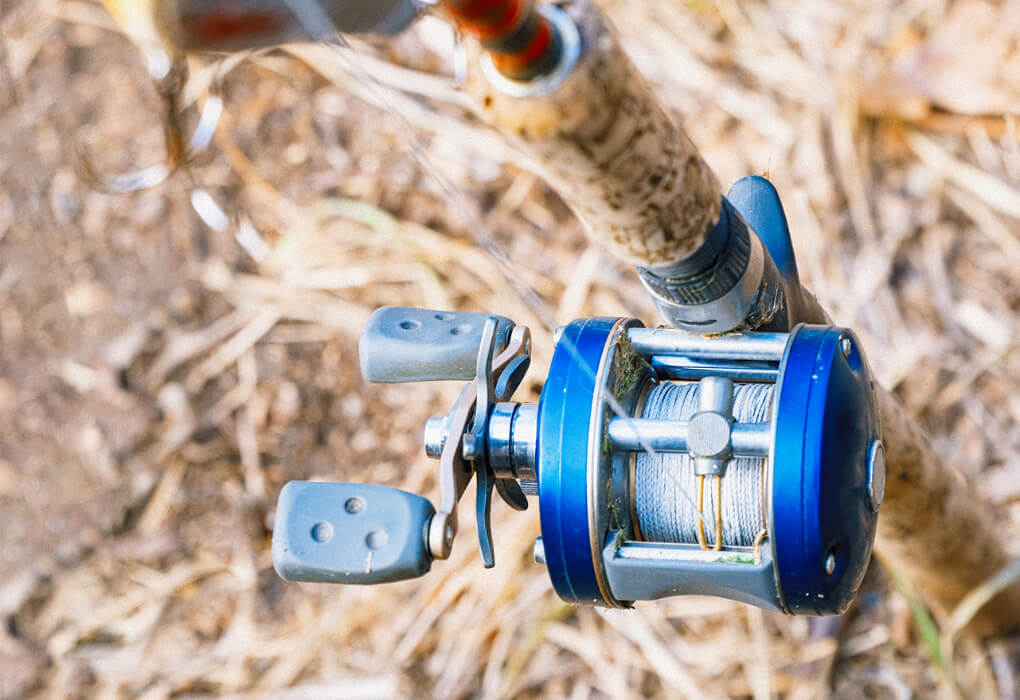
Casting reels are structured with the reel fixed on the rod, which puts the reel seat up against your rod.
The weight of the lure pulls the line when you push it forward, spinning the spool. They have a higher gear ratio so that you can reel faster.
They also have more accurate casts and the ability to cast farther. This is often an essential factor when considering the type of reel and your optimal bass fishing line weight (and type of line).
These types of reels are typically the reel of choice for bass anglers.
You’d want to switch to a spinning reel when using finesse lures, but other than that, casting reels are what you’ll usually want.
Braided vs. Monofilament
When you’re asking about what pound test for bass to use, you must know what types of lines you’re dealing with. There are three basic line choices, and they’re recommended for different kinds of lures and applications.
Often, a combination is recommended, with one type providing a stretchy leader while another type is used as the main line.
When deciding what type of line to use, remember how the elements affect the type of line:
- How visible (or invisible) is the line underwater
- The feel when you’re holding the rod (Line sensitivity or how well you can feel the line pull)
- The level of resistance of the line
- Whether the line will sink or float
These are essential factors to consider when bass fishing to make your experience the most enjoyable (and fruitful).
Monofilament Line
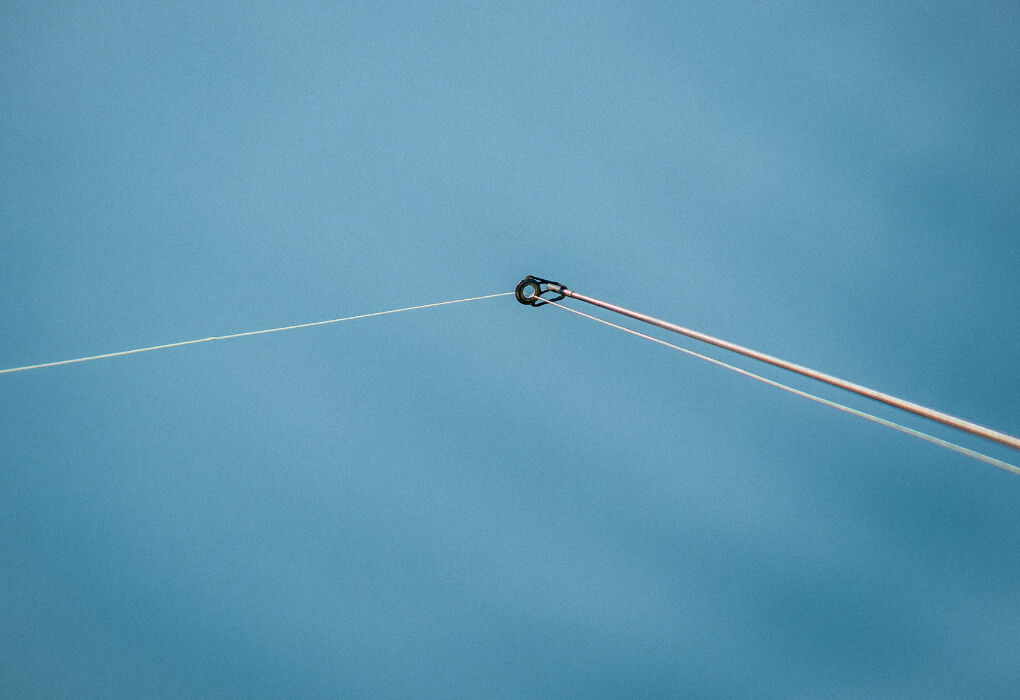
The monofilament line is the most popular, versatile, and standard option. It’s excellent for topwater fishing techniques and practically invisible. It’s made from a single strand of material, hence the ‘mono.’
Benefits of monofilament line include:
- Floating
- High strength
- Low visibility
- Inexpensive
Drawbacks of monofilament line include:
- Limited sensitivity due to stretch
- It can wear down from heat and sun
Due to these factors, this line makes a good choice for bass fishing. It’s strong enough for topwater fishing, even with some cover, and you don’t have to worry about the line breaking when fighting with a bass.
It’s also helpful if you’re dealing with a lot of lily pads and want to use a Texas rig.
For experienced anglers, it can be beneficial to use monofilament for the leader with something more sensitive such as a braided main line.
This gives you the best of both worlds when fishing for bass.
Braided Line
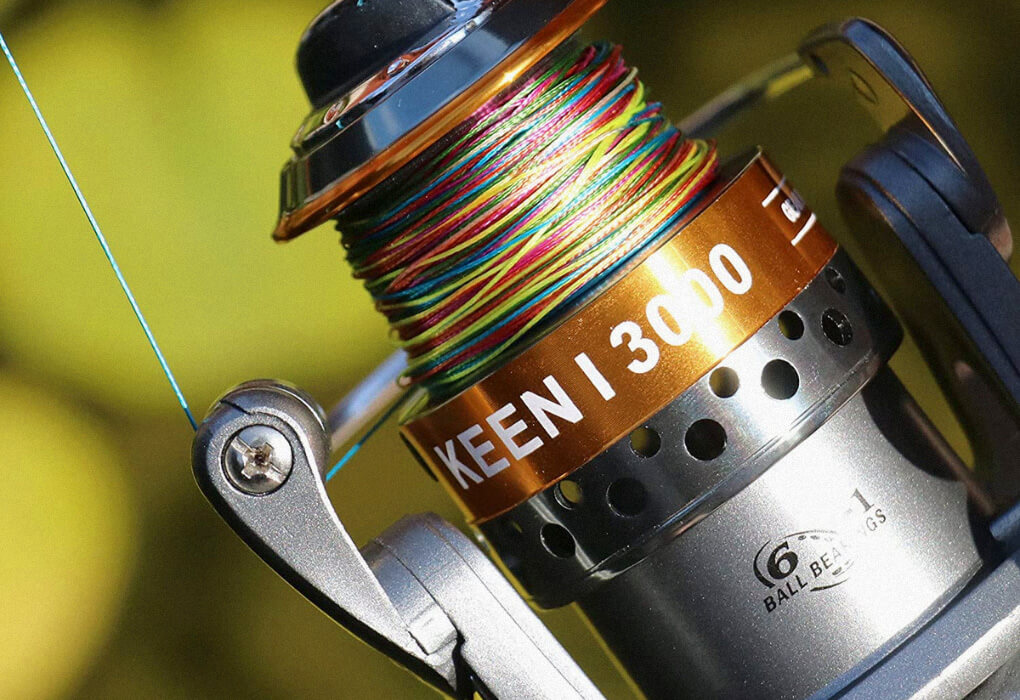
Braided line is increasing in popularity and is an excellent choice for fishing in thick cover.
As it indicates in its name, a braided fishing line is made of braided strands of material, creating a thicker, more robust line than other types.
Benefits of braided line include:
- High line strength
- High sensitivity
- Versatile for many different types of fishing styles and lures
- Lightweight for its strength
- Small diameter for strength
Drawbacks of braided line include:
- Not much stretch (easy to rig the lure out of the fish’s mouth)
- Visible in clear water
- Not great around wood and rocks
Fluorocarbon Line
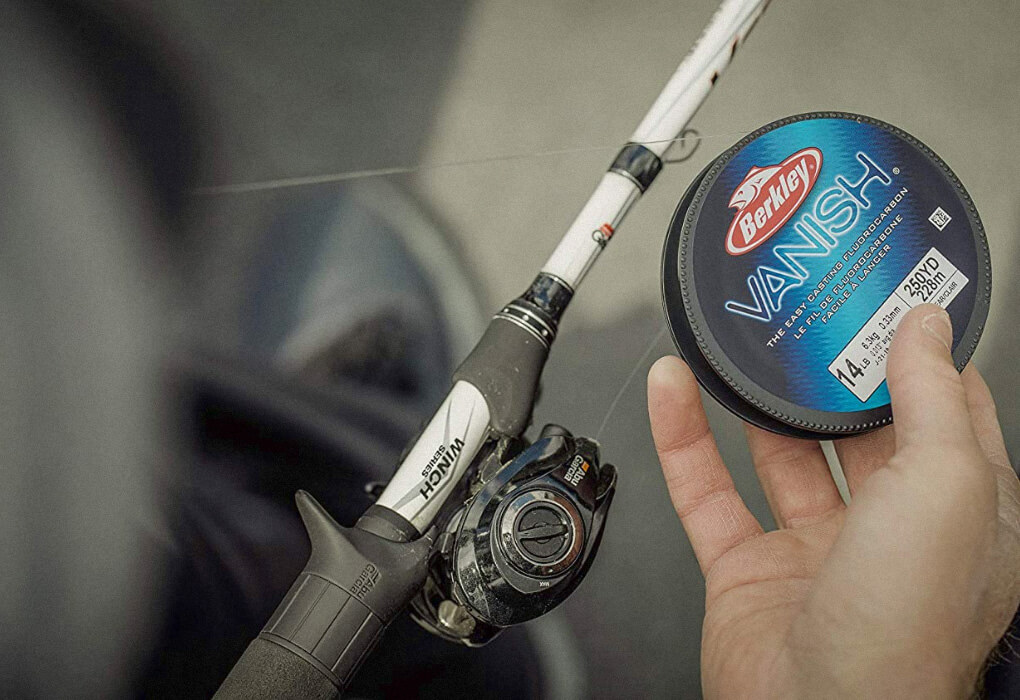
Fluorocarbon lines fall somewhere between monofilament and braided ones. It’s praised for its invisibility, so it’s a fantastic option as a leader in clear water.
Because of its open water benefits, the fluorocarbon line works well with a Carolina rig.
Benefits of fluorocarbon line include:
- Practically invisible, with light-refracting properties that mimic water
- Low stretch
- Resistance to abrasions (significant for harsh conditions)
- Good sensitivity (higher than mono; less than braid)
Drawbacks of fluorocarbon line include:
- Sinks (only a disadvantage in some cases)*
- Stiff and more challenging to manage
Best Fishing Lines for Bass
Now that you’ve got an idea of what pound test for bass you want to use, you must navigate the rough waters of selecting your line.
There are many different brands, types, and pound tests of fishing lines; it can be overwhelming to choose without a solid recommendation or step-by-step guide to choosing the best fishing line for bass.
Here are some of our favorites to get you started.
Mono Lines
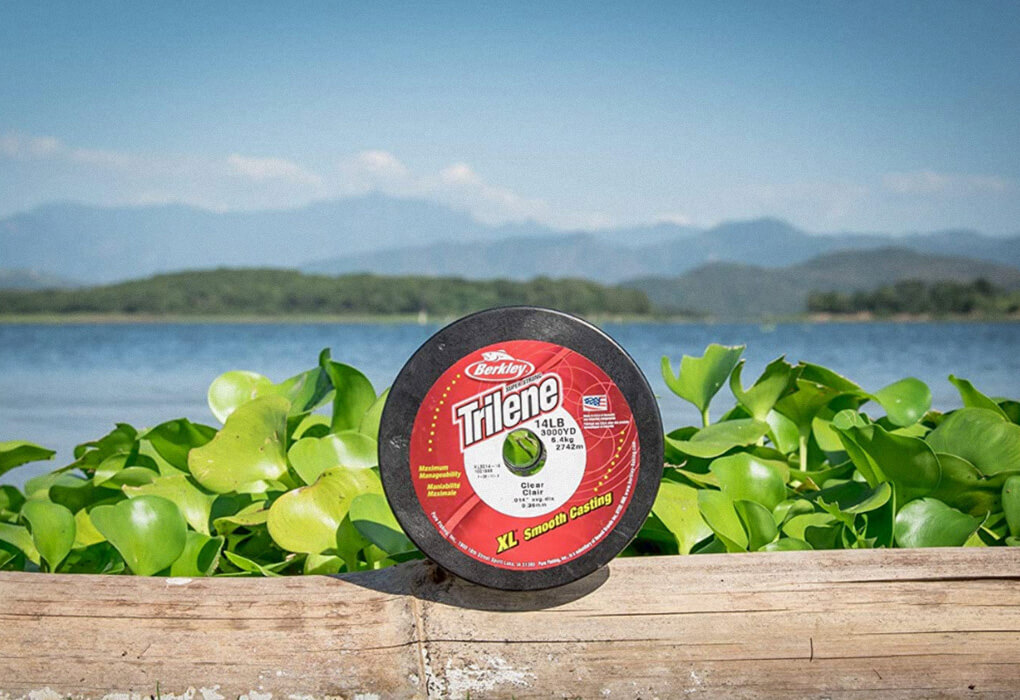
This mono-line from Trilene is an excellent choice for smooth casting that’s versatile for many different types of baits.
You can purchase pound tests between 6 and 20 for a transparent spool (heavier for tinted versions). Plus, it resists kinks and twists, a bonus that works in your favor.
Fluoro Lines
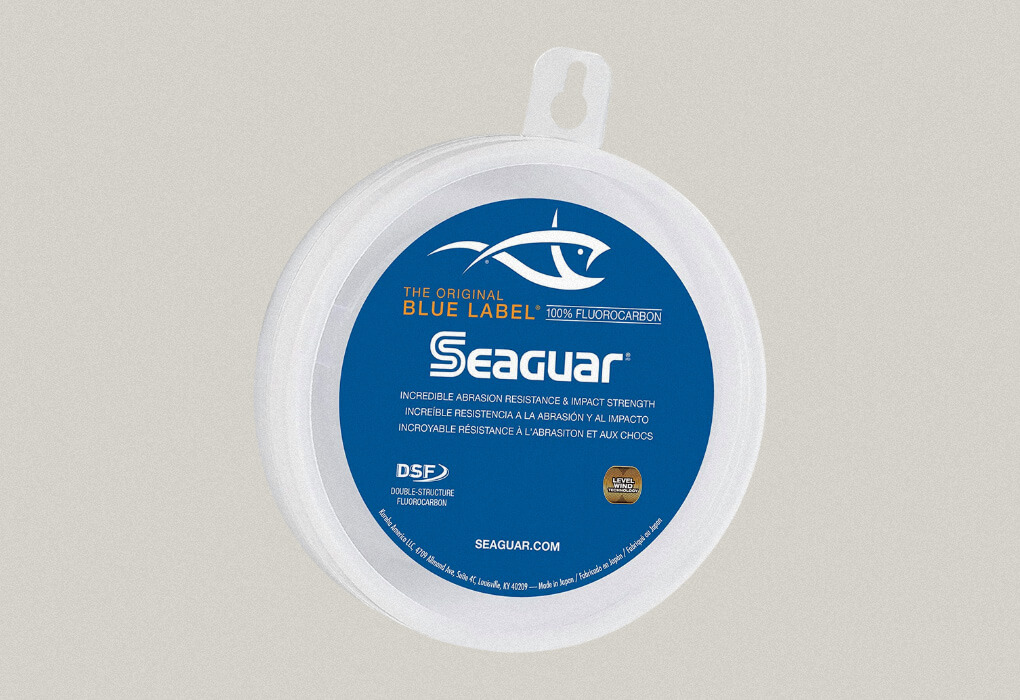
Seaguar is a solid choice when shopping for a fluorocarbon line. They’ve got pound test options from 2-80 pounds, so you don’t need to worry about finding what you need.
Their Blue Label line is exceptionally resilient thanks to its double-structure fluorocarbon composition.
Braid Lines
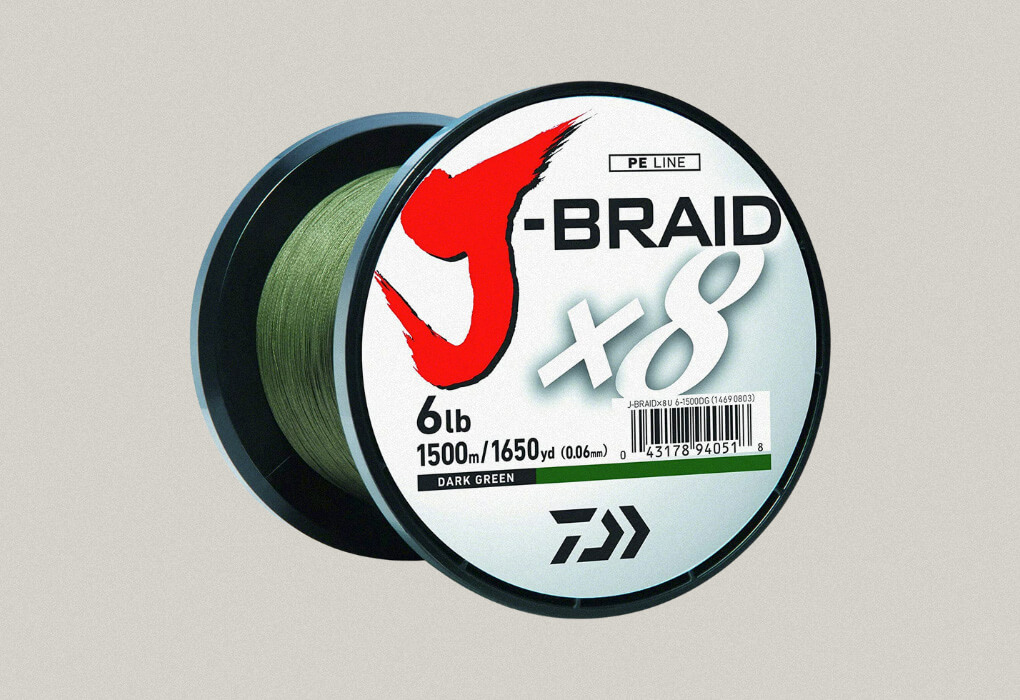
For braid lines, Daiwa makes a fantastic 8-strand braided line called J-Braid. Made of polyethylene and tinted blue (technically, chartreuse), it’s highly visible, sensitive, and smooth.
These traits make it perfect for a majority of bass fishing techniques.
Frequently Asked Questions
When practicing the optimal approach to bass fishing, many factors are at play, and common questions crop up.
Many questions have to do with what lbs test for bass to use (and related topics).
Here are some of those queries, along with their answers.
Is a 6-pound test enough for bass?
Yes, a 6-pound test can be enough for bass. This can work fine if you use light lures or finesse techniques and don’t have a heavy cover.
It can also be great for targeting smaller types of bass.
Is a 14-pound line good for bass?
Yes, a 14-pound test is good for bass. The most common range is between 12-20 pound test.
There are situations to go heavier, but these are the most common strengths.
What is the best line for bass?
12lb monofilament is the best line for bass in most cases.
Refer to the chart in the article above for a cheat sheet for what lb test for bass (and type of line) you want to use based on your situation.
What color line is best for bass?
The color line best for bass is clear. Monofilament or fluorocarbon leaders are best for clear water. Specifically, fluoro because it’s close to invisible.
Green tints can work well for stained water. Color doesn’t matter as much as thickness when fishing for bass unless you’re in very clear water.
Can bass see the line?
Yes, bass can see the line in clear water. If the water is especially clear, reach for fluorocarbon line, which is nearly invisible no matter the water clarity.
In particularly stained water, you can use a green-tinted line to blend in better.
Last Cast
Whether you like to keep it simple or get particularly granular about your approach to choosing what pound test for bass to use, this framework is an excellent guide to get you to the right place.
Deciding what pound test for bass is perfect for you is a personal choice with no correct answer. Anglers have their particular combinations preferred over others.
Find what feels right for you (while considering what type of bait and technique you’re using) to get the best yield and most positive bass fishing experience possible.
I’d love to hear what your favorite line to use for bass fishing is in the comment section!

